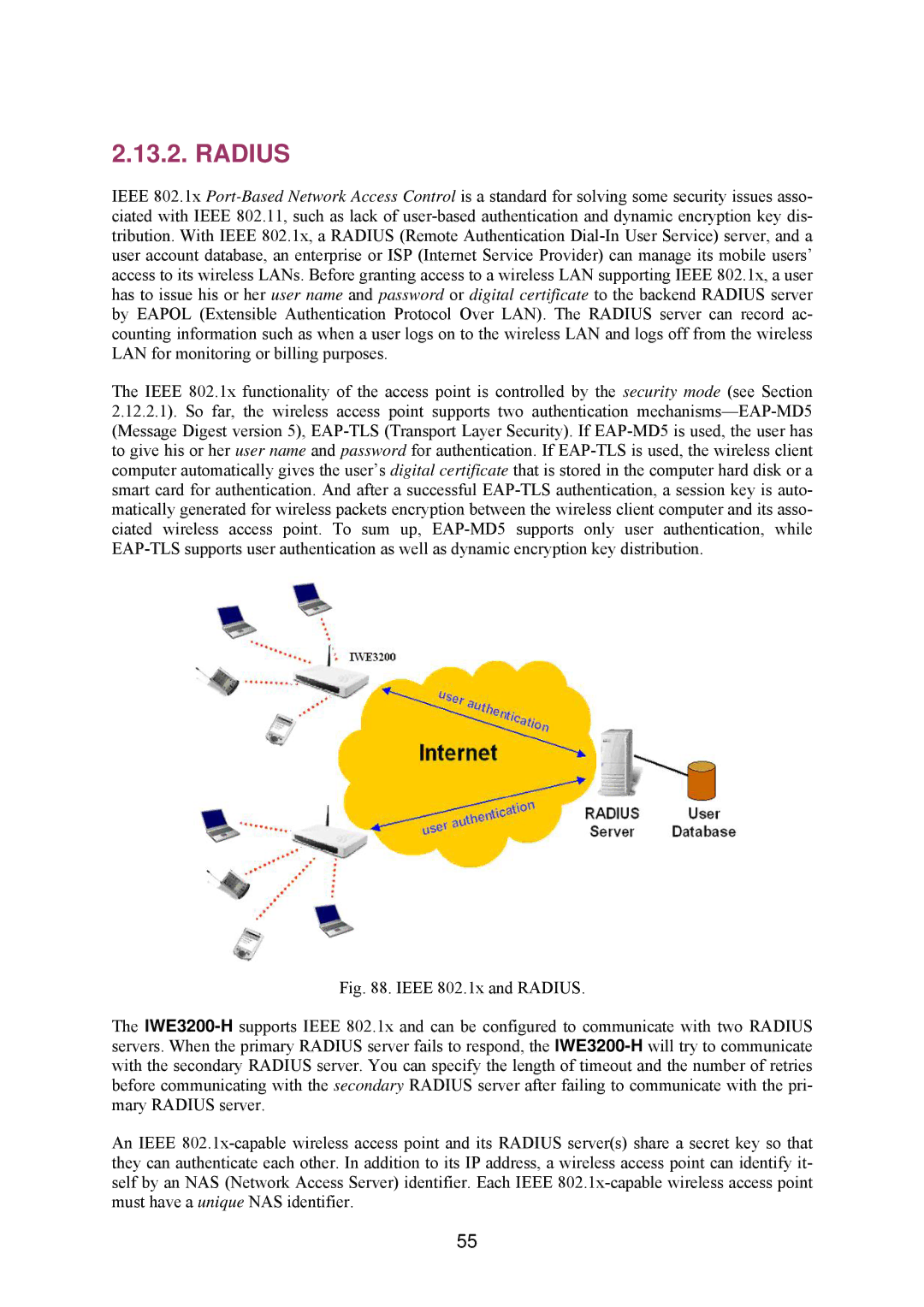
2.13.2. RADIUS
IEEE 802.1x
The IEEE 802.1x functionality of the access point is controlled by the security mode (see Section 2.12.2.1). So far, the wireless access point supports two authentication
Fig. 88. IEEE 802.1x and RADIUS.
The IWE3200-H supports IEEE 802.1x and can be configured to communicate with two RADIUS servers. When the primary RADIUS server fails to respond, the IWE3200-H will try to communicate with the secondary RADIUS server. You can specify the length of timeout and the number of retries before communicating with the secondary RADIUS server after failing to communicate with the pri- mary RADIUS server.
An IEEE 802.1x-capable wireless access point and its RADIUS server(s) share a secret key so that they can authenticate each other. In addition to its IP address, a wireless access point can identify it- self by an NAS (Network Access Server) identifier. Each IEEE 802.1x-capable wireless access point must have a unique NAS identifier.
55
